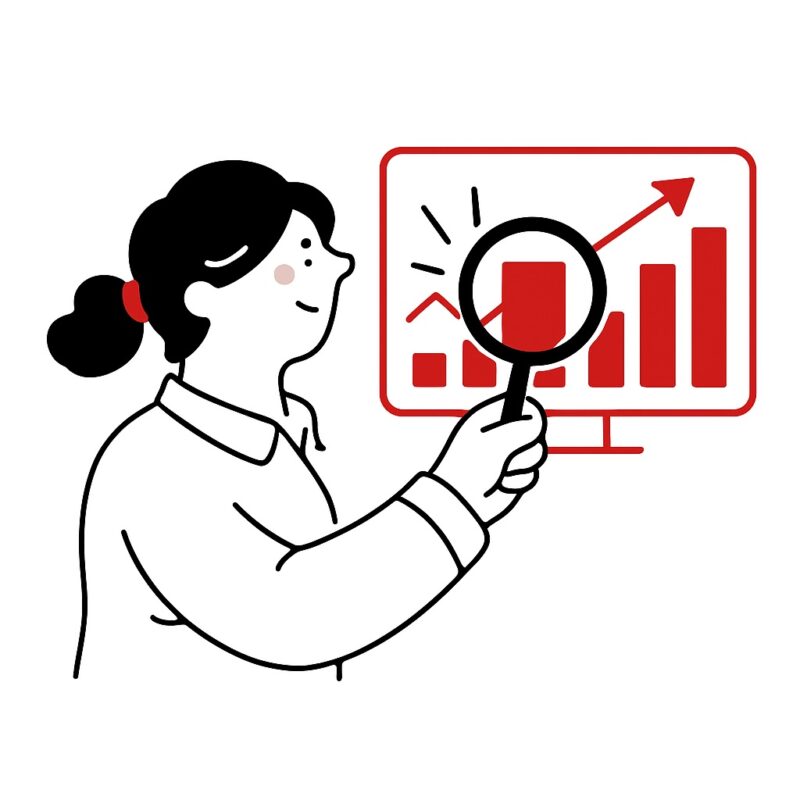Audience research sharpens your marketing and sales
About audience research
A target audience study gives you a clear, substantiated picture of who your target audience is, what motivates them and how best to reach them. A deep understanding of your target audience is essential for effective marketing and developing strategies that meet their needs. Consider finding out what your target audience needs and identifying the most important audience for your organization. By combining qualitative and quantitative research, you gain in-depth insight into demographic characteristics, geographic location, psychographic characteristics, behaviors, interests, likes, needs and decision criteria of your target audience. This insight allows marketers and designers to create products that are valuable to users.
This forms the basis for effective marketing, proposition development, brand strategy and segmentation of each segment within your target audience. Consider formulating clear goals and research questions before conducting the research. Audience research touches several facets of the organization, including decision-making, customer relations and strategic planning. With well-executed audience research, you won’t waste budget on irrelevant campaigns, but instead focus your marketing and sales efforts where they will have the most impact. Distinguishing a specific target group and different target groups is of great importance here. All relevant data is collected and analyzed, after which the results are clearly presented in a report. You can apply the insights from the research when designing a website that meets the needs of your target group.
Description of target group research and target group analysis
Audience research goes beyond just collecting data. It is a strategic process where you deeply analyze market, customer behavior and buying motives. Analyze market behavior to understand trends, competition and best practices within different industries. We look at both hard data (such as demographics and buying behavior) and soft factors (such as motivations, preferences and brand perception). This helps develop effective strategies for branding trajectories, brand activation, and content strategy.
By combining audience research with CPI analysis and buyer persona development, you get a complete picture of the market and the people you want to reach. This makes campaigns more relevant, customer journeys more efficient and brand communications more persuasive. It also supports positioning workshops and helps formulate a distinctive brand proposition and value proposition canvas.
What to expect:
- Analysis of demographic, geographic and psychographic data
- Understanding buying behavior, specific needs and decision processes
- Interviews, surveys, qualitative research and quantitative research
- Segmentation of target groups into different segments based on value and potential
- Application of insights into brand strategy, content creation and product development
Sample applications
- Determine market potential and product-market-fit for new products or services
- When conducting audience research, it is important to know if you offer a product or service so that your marketing strategy can be tailored accordingly.
- Segmentation for account-based marketing (ABM) and social media advertising
- Development of buyer personas and CPI profiles, including persona mapping
- Optimization of customer journey mapping and UX and UI design
- Input for proposition development, storytelling and brand narrative
- Improve employer branding and employer marketing
Experience shows that combining different research methods leads to better results.
Our process for conducting audience research
- Define Question and Purpose: Together we determine what you want to know and why, aligned with your marketing strategy, go to market strategy and growth plan.
- Research plan development: Choosing research methods such as surveys, in-depth interviews, data analysis, desk research and online research. In this step, we formulate clear research questions that guide the research.
- Data collection: Combination of primary and secondary sources, including existing customers and social media data. Data is collected from various sources to get a complete picture of the target audience.
- Analysis: Translate raw data into valuable insights, segmentation, buyer personas and advice for brand development and content formats.
- Advice and implementation: Concrete plan to apply insights into marketing campaigns, brand activation, conversion-oriented design and digital transformation. The results are conveniently summarized in a report with practical advice and recommendations. Document everything you do during the study to ensure the reliability and reproducibility of your process.











